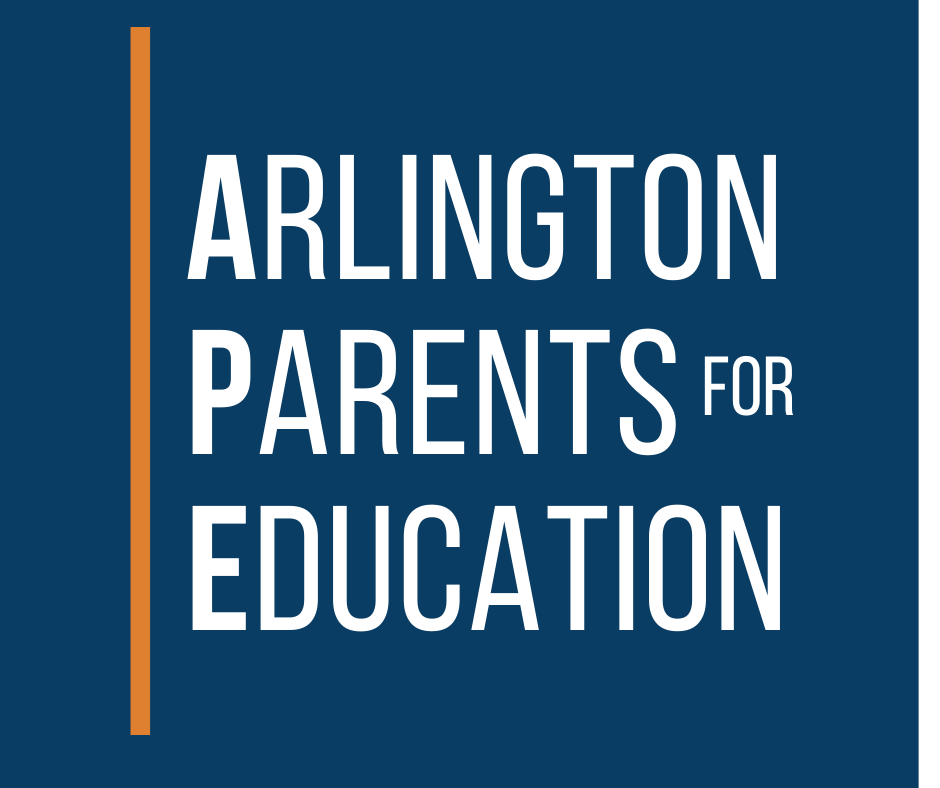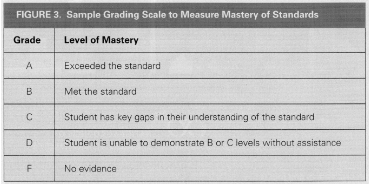APS Should Align Standards-Based Grading to VA SOLs
APS began piloting standards-based grading (SBG) five years ago. Yet, as APS moves to implement SBG more broadly, the APS version of SBG does not clearly convey content mastery. We ask APS to align SBG levels with the four VA SOL performance levels, and to revise the terms to ensure students and parents understand content mastery.
I. APS’ current and proposed SBG levels do not follow Feldman’s recommendations to align with a state’s SOL performance levels, which would require four performance levels plus an "insufficient” category. APS’ SBG levels fail to convey content mastery and report cards using these levels disguise when struggling students are lacking in content proficiency. In the VA elementary reading and math SOLs, there are four performance levels: (i) Fail/Below Basic, (ii) Fail/Basic, (iii) Pass/Proficient, and (iv) Pass/Advanced.
When APS implemented SBG, it had three performance levels centered on meeting the standard: (i) Exceeds Standards, (ii) Meets Standard, and (iii) Developing Mastery.
After the initial implementation of SBG APS removed the Exceeds Standards level (the likely equivalent of the SOL’s Pass/Advanced), and added a level below Meets Standards: thereby appearing to center the scale below grade level: (i) Meets Standard, (ii) Approaching Mastery, (iii) Developing Mastery.
APE cannot find a SBG resource online that provides evidence or precedent for APS’ decision to develop its own rubric not tied to state performance levels. Every SBG rubric online, including Feldman's from the Crescendo Group (which APS has worked with to implement SBG) has four performance levels, from 0-4, 1-4, or 1-5 with a level above “meets standards” or “average” (usually called "exceeds" or "above standards"). Most SBG papers do not mention a rubric, and instead recommend tying SBG levels to state standards. (See references at the end of this paper). In VA, there are four performance levels. Why is APS failing to implement SBG as recommended?
A. In Joe Feldman’s model, The End of Points, Educational Leadership, Feb 2018, the Crescendo Group, there are four performance levels and one additional category for insufficient evidence:
B. For the VA elementary reading and math SOLs, there are four performance levels:
C. For the VA elementary history and science SOLs, there are three performance levels:
D. Currently, APS has three performance levels which do not align to VA SOL performance levels and appear to be centered BELOW grade level, and one category for insufficient evidence:
E. APS’ first SBG format had three performance levels that appeared to be centered on mastering grade content, and one category for insufficient evidence. This appeared to align with the VA history and science SOL performance levels:
II. SBG, without alignment to VA SOL performance levels, does not communicate mastery of content or progress. We ask, what SOL level is “Meets Standards”? If it is Pass/Advanced, then why is advanced the standard? If it is Pass/Proficient, then why is APS centering a scale below grade level? APS’ removal of the “Exceeds Standards” level and failure to align with SOL performance levels has caused confusion and has led elementary parents and students to not understand a student’s progress, which is particularly concerning for struggling learners.
Most parents assume that a scale with 1-3 (as APS has) has a mean in the middle. But, for APS’ scale, the mean “Approaching Mastery” appears to represent performance that is below grade level. Centering the scale below grade level fails to communicate that a child is not on track to understand the year’s content or to pass the SOLs.
Parents do not understand that their kids are not on grade level. “Developing” and “Approaching Mastery” imply that a student is on track. Many parents this year did not know their young children were behind in reading and would need summer school because the student had received a grade of "Approaching Mastery" all year long.
In one information session, APS staff answered a parent’s question about the removal of “Exceeds Standards” by saying that such information should be conveyed in robust teacher comments. This only adds to teachers’ burden. Why is APS putting a significant burden on teachers instead of implementing the system as recommended by tying them to SOL performance levels?
III. APS Should Gather and Incorporate Feedback. APS has piloted this program for five years, yet APS has not provided any data on SBG’s effectiveness, nor on students’, teachers’, or parents’ experiences and level of understanding.
APS should survey the community to gather feedback on whether students and parents understand SBG report cards and their students’ level of content mastery.
The Crescendo Group’s website states that there will be many expected outcomes from its partnerships with districts (see below). Why hasn’t APS evaluated these outcomes from the pilot program before mandating SBG across the school system? The Crescendo Group states the following as expectations of SBG:
“Teachers use improved methods of standards-based grading tied to Common Core State Standards or other mastery and assessment standards and rubrics
Students can more accurately describe expectations for their academic outcomes, and their own place relative to those outcomes
For the district: Course passing rates increase and, at the same time, less grade inflation; “Teacher-endorsed” support for consistent grading and reporting policies that are sustainable (the district doesn’t have to create a top-down policy and be responsible for enforcement); Improved conversations with caregiver/parent community about student expectations for CCSS mastery.”
We strongly request that APS align elementary SBG performance levels to VA SOL performance levels by reinstating the “Exceeds Standards” level to align with the SOL Pass/Advanced level. We also strongly recommend that APS revise the terms “Approaching Mastery” and “Developing Mastery” to more accurately convey that students are not yet proficient in the standard and are not meeting grade-level expectations.
References: SBG resources that mention a rubric:
What Traditional Classroom Grading Gets Wrong (Opinion) (edweek.org) By Joe Feldman “Teachers should use a more proportionately structured 0-4 scale”
Grading-7-Standards-Based-Grading-Will-Improve-Education.pdf (tguskey.com) Standards-based grading should be tied to state standards.
Edutopia: Getting Started With Standards-Based Grading in Middle and High School | Edutopia “Mastery is usually measured on a 1-4 or 1-5 scale, with each level of mastery clearly defined on the rubric.”
Grading Rubrics: Sample Scales | Sheridan Center | Brown University
Joe Feldman, The End of Points, February 2018 (photo in the above paper)



